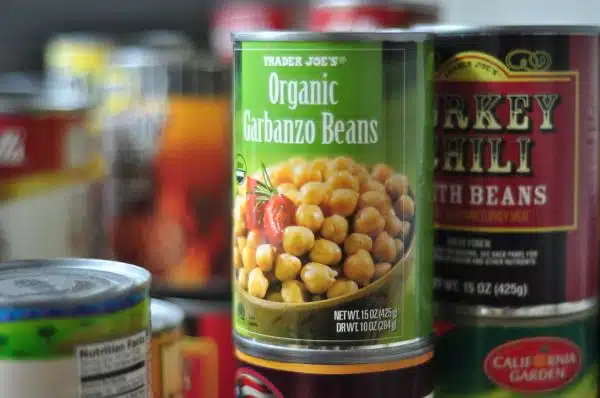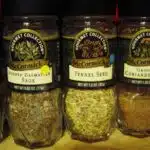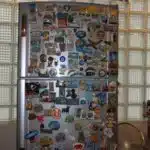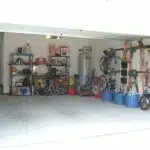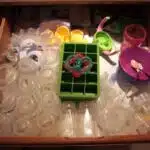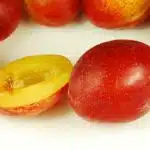A well-organized pantry is a critical component of any efficient kitchen. However, it can be easy for the pantry to become cluttered and disorganized over time, making it difficult to find what you need when you need it. Fortunately, with just a few simple steps, you can clean out your pantry and transform it into an orderly space that serves your needs.
In this article, we will explore how to clean out your pantry in four easy steps. We will begin by discussing the importance of planning and preparation before diving into the actual cleanup process. Next, we will walk you through the process of decluttering your pantry and identifying items that are past their expiration dates or no longer serve a purpose in your home. From there, we’ll explore strategies for reorganizing your pantry to maximize space and efficiency. By following these easy steps, you’ll be able to enjoy a well-organized pantry that makes meal prep and cooking a breeze.
Understanding The Benefits Of A Clean Pantry
A clean pantry is not only visually appealing, but it also has numerous benefits for your health and the environment. A cluttered pantry can lead to expired food items that can cause health issues if consumed. By regularly cleaning out your pantry, you reduce the risk of consuming expired or spoiled foods. Additionally, a clean pantry reduces food waste as you are better able to keep track of what items you have and when they expire.
Maintaining a clean pantry requires effort and discipline. Regular inventory checks are essential in keeping track of what items you have and what needs to be restocked or thrown away. Labeling and organizing systems make it easy to find specific items and ensure that everything is stored in its proper place. By implementing these tips, you can maintain a clean pantry all year round.
Incorporating regular cleaning into your routine may seem daunting at first, but the benefits far outweigh the effort required. Not only will you improve your health by reducing the risk of consuming expired foods, but you will also become more environmentally conscious by reducing food waste. The next section will guide you through preparing for your pantry cleanout so that the process is manageable and efficient.
Preparing For Your Pantry Cleanout
As we discussed earlier, having a clean pantry has many benefits. It not only saves you time and money but also helps you maintain your health by reducing the risk of foodborne illnesses. However, cleaning out your pantry can be an overwhelming task. That’s why it’s essential to prepare yourself for the process before diving in.
Tips for motivation:
- Set a deadline for yourself and stick to it.
- Reward yourself after completing each step of the process.
- Ask a friend or family member to help you stay accountable.
Setting realistic goals is another crucial aspect of preparing for your pantry cleanout. Don’t try to tackle everything at once; break it down into manageable steps. For example, start with one shelf or one type of food item at a time. This will prevent you from feeling overwhelmed and help you stay motivated throughout the process.
Once you’ve prepared yourself mentally, it’s time to begin removing everything from your pantry. This may seem like a daunting task, but trust me; it’s worth it. By removing everything from your pantry, you’ll be able to see exactly what you have and what needs to go. It also allows you to clean all surfaces thoroughly.
Incorporating these tips for motivation and setting realistic goals will make preparing for your pantry cleanout much more manageable. Remember that this is a process that takes time, so don’t rush it. By taking things one step at a time, you’ll be able to achieve your goal of having a clean and organized pantry in no time!
Removing Everything From Your Pantry
To begin the process of cleaning out your pantry, it’s essential to remove everything from it. This step may seem overwhelming, but it’s crucial for a successful decluttering process. Benefits of decluttering include increased productivity and mental clarity, so don’t skip this crucial first step.
When removing items from your pantry, it’s important to group like items together. For example, place all canned goods in one spot and all snacks in another. This will make sorting through your food and supplies much easier later on. Tips for organizing include keeping frequently used items at eye level and placing heavier items on lower shelves to avoid accidents.
By taking the time to remove everything from your pantry, you’re setting yourself up for success in organizing your space. Remember to group like items together and keep frequently used items easily accessible to maximize efficiency. In the next section, we’ll discuss how to sort through your food and supplies and decide what stays and what goes.
Sorting Through Your Food And Supplies
Once you’ve removed everything from your pantry, it’s time to start sorting through your food and supplies. This is a critical step in the pantry decluttering process, as it will help you determine which items are still good and which ones need to be thrown away. Sorting through your pantry can also help you reduce food waste by identifying items that are close to their expiration date.
To begin sorting, create three distinct piles: keep, donate, and toss. The “keep” pile should include items that are still fresh and within their expiration dates. The “donate” pile should contain non-perishable items that are still good but may not be used in your household. Finally, the “toss” pile should have items that are expired or no longer safe for consumption. Be sure to check the expiration dates on every item before deciding where it belongs.
As you sort through your pantry, take note of any patterns or trends in what you’re keeping versus what you’re tossing or donating. Are there certain types of foods that always go bad before you have a chance to use them? Are there ingredients that seem to accumulate but never get used? Use this information to inform future grocery shopping trips and meal planning efforts. By taking the time to sort through your pantry, you’ll not only reduce clutter but also improve the efficiency of your kitchen.
Moving forward with cleaning out your pantry involves checking expiration dates on all items left in the “keep” pile. This crucial step ensures that nothing past its prime remains on your shelves and helps prevent future food waste. Check each item carefully and dispose of anything past its expiration date or showing signs of spoilage. With this complete, it’s time to move onto organizing all remaining food and supplies in an efficient manner!
Checking Expiration Dates
As the saying goes, “out with the old and in with the new”. When it comes to organizing your pantry, one of the most important steps is checking expiration dates. Not only does this help keep your food fresh, but it also ensures that you’re not consuming anything that’s past its prime.
To start, gather all of your items and check each one for its expiration date. This may seem like a daunting task, but using organizing containers can help make the process easier. Group similar items together and label them accordingly. This will not only make it easier to identify expired items but also help you find what you need more quickly.
Replacing expired items is crucial for maintaining a healthy and organized pantry. Not only do expired foods lose their flavor and nutritional value, but they can also be harmful if consumed past their expiration date. It’s important to regularly check expiration dates and dispose of any expired items promptly. By doing so, you’ll ensure that your pantry is stocked with fresh and safe food for you and your family to enjoy.
Moving forward, identifying items to donate or discard is the next step in cleaning out your pantry. By taking the time to go through each item individually, you’ll be able to determine which ones are still usable and which ones need to go. Whether it’s donating non-perishable goods to a local food bank or simply discarding expired items, clearing out unnecessary clutter will not only make your pantry look cleaner but also make meal prep more efficient.
Identifying Items To Donate Or Discard
Once you’ve taken inventory of your pantry and identified items that are past their expiration date, it’s time to decide what to do with the remaining items. One option is to donate the non-perishable items that are still good but won’t be consumed by your household. Before donating, however, it’s important to research donation etiquette in your area and find a reputable organization that will accept your donations. This will ensure that your donations go to those who truly need them and can benefit from them.
Another way to reduce food waste is by identifying items that you won’t realistically consume before their expiration date. While it may be tempting to hold onto these items just in case, it’s important to remember that they’ll likely end up being thrown away in the future. Instead of letting them go to waste, consider donating them or finding creative ways to incorporate them into meals before they expire. By doing so, you’ll not only reduce food waste but also help others in need.
Incorporating donation and reduction tactics into your pantry cleanout process is a great way to serve others while also minimizing waste. Remember to research donation etiquette in your area and find reputable organizations for donations. Additionally, try not to hold onto unused items for too long and instead find ways to incorporate them into meals or donate them before they expire. With these simple steps, you’ll be able to declutter your pantry while making a positive impact on those around you.
Transition: Now that you’ve identified which items need to be donated or discarded, it’s time to move onto cleaning out the shelves and surfaces of your pantry space.
Cleaning Your Pantry Shelves And Surfaces
Identifying items to donate or discard is only the first step in cleaning out your pantry. The next step is to clean your pantry shelves and surfaces. This is a critical part of the process because it ensures that you have a clean and organized space to work with.
To begin, remove everything from your shelves and wipe them down with DIY cleaning solutions. You can make these solutions using household items such as vinegar, baking soda, and lemon juice. Once your shelves are clean, it’s time to organize your items. Use organizing tools such as shelf dividers, baskets, and bins to group similar items together. This makes it easier for you to find what you need when you need it.
With your pantry shelves clean and organized, it’s time to reorganize your pantry layout. Think about how you use your pantry and arrange items accordingly. For example, place frequently used items at eye level for easy access. Use the top shelves for larger or less frequently used items. Make sure to label everything clearly so that you know where everything belongs.
By following these steps, you’ll have a clean and organized pantry that makes meal prep a breeze. Remember to regularly go through your pantry and donate or discard any unused or expired items. A well-organized pantry not only saves you time but also reduces food waste in the long run.
Reorganizing Your Pantry Layout
After clearing out your pantry, it’s time to reorganize the layout. One effective way of optimizing space is by grouping similar items together. For instance, you can put all canned goods in one section, snacks in another, and baking supplies in a separate area. This technique not only saves space but also makes it easier to find what you’re looking for.
Another helpful tip is to use creative labeling. Instead of simply writing the item name on the label, consider adding the expiration date or storage instructions. You can also use color-coded labels for different categories of food. By doing so, you’ll be able to keep track of what you have and what needs replenishing.
When reorganizing your pantry layout, it’s essential to make sure that everything has a designated spot. This means using baskets or bins for loose items and ensuring that shelves are adjusted accordingly. By taking the time to properly organize your pantry, you’ll not only create an efficient system but also contribute to a stress-free cooking experience.
By grouping similar items together and utilizing creative labeling techniques, you’ll be able to optimize space and create a more functional pantry. In the next section, we’ll discuss how grouping similar items together can further benefit your pantry organization system.
Grouping Similar Items Together
Grouping similar items together is an important step for effectively organizing a pantry. Categorizing items, compartmentalizing them into bins, containers, and shelves, and labeling them will provide a basis for organizing a pantry. Pots, pans, spices, canned goods, dry goods, and non-perishables should all be separated and placed in their own designated areas. Doing so will help to ensure that everything is in its rightful place, making it easier to find what is needed quickly.
Grouping
When it comes to kitchen organization, efficient storage is key. One of the most important aspects of this is grouping similar items together. By doing so, you not only create a more organized pantry, but also make it easier to find what you need when you need it.
The first step in grouping similar items together is to take everything out of your pantry and assess what you have. This will allow you to see which items are similar and can be grouped together. For example, all of your baking supplies should be stored in one area, while your canned goods should be in another.
Once you have assessed your items and grouped them accordingly, it’s time to think about efficient storage methods. For smaller items such as spices or snacks, consider using baskets or bins to keep them contained and easy to access. For larger items like bags of flour or sugar, use clear containers with labels for easy identification. By taking the time to group your similar items together and store them efficiently, you’ll be able to easily maintain a clean and organized pantry for years to come.
Similar Items
When it comes to organizing a kitchen, grouping similar items together is an essential step to creating an efficient and functional space. In this regard, categorizing snacks and organizing spices are two areas that require special attention. Snacks come in various forms and sizes, from granola bars to bags of chips. By grouping them together based on their type or frequency of use, you can easily locate them when needed. Similarly, spices can be stored in a drawer or cabinet, but it’s important to keep them organized in a way that makes sense to you.
To group similar items together effectively, it’s important to take everything out of the pantry and assess what you have. This will allow you to see which items are similar and can be grouped together. For instance, you can group all the sweet snacks in one corner and the savory ones in another. When it comes to spices, arranging them alphabetically or by cuisine type will make it easier for you to find what you need.
After categorizing your snacks and organizing your spices, consider using clear containers with labels for easy identification. For smaller items like snack bars or spice packets, baskets or bins can help keep them contained and easy to access. Additionally, using shelf risers or expandable shelves can make the most of your pantry space while keeping everything visible and accessible. With these simple tips, grouping similar items together will not only help organize your kitchen but also save time when preparing meals and snacks for your family.
Utilizing Storage Bins And Labels
Utilizing storage bins and labels can significantly improve the organization of your pantry. Storage bin alternatives such as baskets, plastic containers, and wire racks are excellent ways to store items that may be difficult to stack or fit in traditional shelving. These containers also come in different sizes, making them versatile for various pantry items.
Labeling techniques for visual appeal can help make your pantry look cohesive and aesthetically pleasing. Labels can be created using a label maker or handwritten on stickers or chalkboard labels. Grouping similar items together and labeling them accordingly will save time when locating specific ingredients needed for cooking or baking.
Incorporating storage bins and labels into your pantry organization system will not only make it easier to locate items but also add a level of sophistication to the overall appearance. Check out the table below for some labeling ideas that evoke emotion in the audience.
| Label | Description |
|---|---|
| Healthy Snacks | For those who want to maintain a healthy lifestyle |
| Indulgent Treats | For those who need a little pick-me-up after a long day |
| Quick Meals | For those who are always on-the-go |
| Special Occasions | For those special moments that call for something extra |
With proper labeling techniques, you’ll be able to easily find what you need when preparing meals. Consider your cooking and baking needs when organizing your pantry to ensure everything is easily accessible.
Considering Your Cooking And Baking Needs
An organized pantry is essential for successful cooking and baking. Begin by taking inventory of all items in your pantry and categorizing them into food groups.
Meal planning is an important step for successful cooking and baking. Consider what items you have in your pantry and plan your meals accordingly.
Knowing when ingredients expire is essential for successful cooking and baking. Check expiration dates on any pantry items and discard any that are expired or near expiration.
Taking advantage of sales and bulk buys is a great way to save money and store pantry items. However, make sure to store items in a way that makes them easily visible and accessible.
Utilizing airtight containers to store pantry items is important for preserving freshness and extending the life of ingredients.
Incorporating a labeling system to organize your pantry is beneficial for quickly and easily finding ingredients while cooking and baking.
Inventorying Pantry
Are you tired of opening your pantry only to be greeted by a cluttered mess? Don’t worry, you’re not alone. Pantry organization can seem like a daunting task, but with a little effort and some clever storage solutions, your pantry can be transformed into an orderly haven. The first step in organizing your pantry is to take inventory of what you have.
Start by emptying your entire pantry onto a clean surface. This will allow you to see everything you have and assess what needs to be kept and what needs to go. As you take inventory, check expiration dates and throw away anything that has expired or is no longer usable. Consider donating unopened items that are still good but won’t be used in your household.
Next, group similar items together such as canned goods, baking supplies, snacks, etc. This will make it easier for you to find what you need when cooking or baking. Invest in storage solutions like clear containers or baskets to keep items organized and easy to see. Don’t forget to label everything for added convenience.
By taking the time to inventory your pantry and investing in some simple storage solutions, you can transform your cluttered pantry into an orderly space that makes meal prep a breeze. With a little effort up front, maintaining an organized pantry will be a cinch!
Meal Planning
After taking inventory and organizing your pantry, it’s time to consider your cooking and baking needs. One important aspect of this is meal planning, which can help you save time and money while ensuring that you always have the ingredients you need on hand. Meal planning involves creating a schedule for meals in advance, as well as making a shopping list of the necessary ingredients.
When it comes to meal planning, there are several budget-friendly tips to keep in mind. First, plan meals based on what’s on sale at the grocery store or what items you already have in your pantry. This can help reduce food waste and save money. Additionally, consider incorporating less expensive but still nutritious ingredients like beans, lentils, and frozen vegetables into your meals.
Another key strategy for meal planning is meal prepping. This involves preparing some or all of your meals in advance so that they’re ready to go when you need them. This can include chopping vegetables, cooking grains or proteins, or assembling entire meals and storing them in containers. By doing some prep work ahead of time, you can save time during busy weekdays and ensure that healthy meals are always within reach.
Ingredient Expiration Dates
After meal planning and meal prepping, it’s time to focus on the ingredients that you use for cooking and baking. It’s important to keep track of the expiration dates of these ingredients to ensure food safety and avoid waste. The importance of checking expiration dates cannot be overstated as expired ingredients can lead to food poisoning or spoilage.
Food safety guidelines recommend checking expiration dates regularly, especially for perishable items like dairy products, meat, and poultry. These items should not be consumed after their expiration date has passed as they may have harmful bacteria that can make you sick. Non-perishable items like canned goods and spices also have an expiration date, which affects their flavor and quality.
To avoid waste and ensure that your ingredients are fresh, it’s best to organize them by their expiration dates. This way, you can use up those that are about to expire first before they go bad. It’s also helpful to label your ingredients with the date of purchase so you can keep track of how long they’ve been in your pantry or fridge. By checking expiration dates regularly and following food safety guidelines, you can maintain a healthy and efficient kitchen.
Maximizing Vertical Space
Considering your cooking and baking needs is an essential first step in organizing your pantry. It allows you to identify the necessary ingredients, spices, and tools you use frequently. Additionally, it helps you determine how much space you need for each item. This way, you can maximize your vertical space by placing items that are used less often at the top shelves while keeping the frequently used ones within arm’s reach.
Maximizing vertical space is crucial in organizing a pantry effectively. You can achieve this by using DIY projects or investing in organizing tools specifically designed for pantries. For example, installing pull-out drawers or shelves can make it easy to reach items stored at the back of deep cabinets. You can also use tiered racks to optimize shelf space or add hooks to hang small kitchen gadgets like measuring spoons.
Creating a system for restocking and maintenance will keep your pantry organized as time goes on. Make it a habit to check expiration dates regularly and dispose of expired items promptly. When restocking your pantry, group similar items together and label them accordingly. This practice will save time when looking for specific ingredients, making meal prep more efficient and enjoyable.
Creating A System For Restocking And Maintenance
As you finish decluttering and cleaning your pantry, it’s time to think about creating a system for restocking and maintenance. An effective system involves two crucial elements: inventory management and space optimization. With these in place, you’ll be able to keep your pantry organized and fully stocked with the essentials.
Inventory management is all about keeping track of what you have on hand and what you need to purchase. One way to achieve this is by using an inventory list. This will help you avoid overstocking or under-stocking your pantry items. Another strategy is to group similar items together, making it easier for you to identify when supplies are running low.
Space optimization is equally important in maintaining an organized pantry. Make use of vertical space by installing shelves or hanging organizers on the doors. You could also invest in clear storage containers that allow you to see what’s inside while keeping everything fresh and neatly arranged.
With a solid system for restocking and maintenance in place, you can now enjoy your newly cleaned pantry without worrying about clutter or disorganization creeping back in.
Enjoying Your Newly Cleaned Pantry
Now that your pantry is clean and organized, it’s time to enjoy the fruits of your labor! Here are some tips for making the most out of your newly cleaned pantry.
First, take advantage of DIY pantry labels. Labels make it easy to find what you need quickly, especially if you have a large pantry or share it with other people in your household. You can purchase pre-made labels or create your own using printable labels and a label maker. Make sure to label all containers and shelves so that everyone knows where everything goes.
Secondly, organizing spices can be a game-changer in terms of efficiency and accessibility. Use a spice rack or drawer insert to keep all your spices in one place. Arrange them alphabetically or by cuisine type for even more organization. This will make meal prep easier and save you time when cooking.
Lastly, keep up with maintenance by doing regular checks of your pantry every few months. Take everything out, wipe down the shelves, and re-organize as needed. This will ensure that your pantry stays clean and organized for the long haul.
With these simple tips, you’ll be able to fully enjoy your newly cleaned pantry. But what happens if issues arise? Don’t worry – we’ve got you covered with troubleshooting common pantry organization issues in our next section.
Troubleshooting Common Pantry Organization Issues
A disorganized pantry can be frustrating to navigate. It can lead to overbuying, food waste, and even unhealthy eating habits. The good news is that with a little effort and some basic organizing principles, you can transform your pantry into a well-ordered space that maximizes storage and minimizes clutter.
To begin with, maximizing space in your pantry is key to maintaining an organized space. One way to do this is by using vertical space effectively. Installing shelves or hanging organizers on the back of the door are great options for utilizing unused space. Another way to maximize shelf space is by using risers or stacking baskets. These simple additions create layers of storage without taking up too much room.
Another important aspect of pantry organization is implementing a labeling system. Labels not only make it easier to find items but also help maintain order in the long run. Use clear containers, jars or baskets with labels to store dry goods like pasta, rice, and cereal as well as snacks and baking ingredients. For canned goods, consider using a tiered shelf organizer that makes it easy to see what you have while keeping everything neat and tidy.
By following these tips – maximizing space and implementing a labeling system – you’ll have an organized pantry that works for you! Keep in mind that maintaining organization requires ongoing effort but with consistency and dedication, you’ll be rewarded with a functional and efficient pantry that will save you time and money in the long run.
Conclusion
A clean and organized pantry is essential for a stress-free kitchen experience. By following these four simple steps, you can transform your cluttered pantry into a well-organized space that will save you both time and money.
Firstly, it’s important to understand the benefits of a clean pantry, including easier meal planning, faster grocery shopping trips, and less food waste. Secondly, prepare for your cleanout by gathering cleaning supplies and storage containers. Thirdly, remove everything from your pantry and sort through your food and supplies while checking expiration dates. Lastly, maximize vertical space and create a system for restocking and maintenance.
By implementing these tips, you’ll be able to enjoy your newly cleaned pantry in no time. However, if you encounter any common pantry organization issues such as overcrowding or lack of accessibility, don’t worry – there are plenty of solutions available to help troubleshoot these problems. With some dedication and effort, maintaining a perfectly organized pantry can become second nature!
Image Credits
- “Healthy food pantry options” by Salvation Army USA West (featured)

